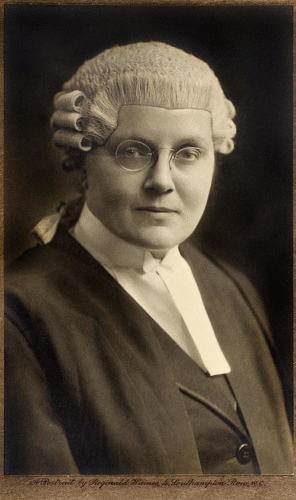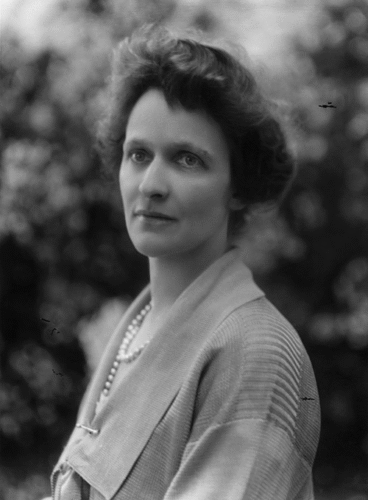How Times have Changed: The Sex Disqualification (Removal) Act of 1919
Both my Jane Austen’s Dragons series and the World Wright series feature women whose unusual skills, place them in roles that put them nose to nose with men in authority, and sparks (sometimes literally) fly. More than once, readers have bristled at the anger and opposition these characters have faced—why were the male characters so dead-set against them?
There are a lot of answers to that. The characters all have layered and nuanced motivations, but there are a few motives that all those prickly characters share. The 1800s was a very different world than what we know today, and the separation between male and female spheres was far more pronounced that it is for us. That being the case, when one tried to cross that divide, it was often noticeable and unsettling, especially to those who firmly entrenched in their perceptions.
To offer a bit of perspective consider that, in England, just over 100 years ago, women were routinely barred from much of public life. Until 1919, women could not become a lawyer, serve on a jury, or even work as a civil servant for the government—no matter their qualification. Women were not admitted into incorporated professional societies and universities routinely refused to bestow degrees upon women, even if they completed all the coursework and requirements for said degrees.
The Sex Disqualification (Removal) Act of 1919 (which passed the year after the 1918 Representation of the People Act, giving SOME English women the right to vote) started opening the door for greater opportunities for English women.

How did the 1919 Act come about?
By the late 1800s and early 1900s, women were actively campaigning for more rights in public like. During World War I, women stepped up to fill roles left vacant by men fighting in the war. Then women filled jobs in factories, offices, and even police forces. They ran trams, delivered mail, and kept the country running. This very visible demonstration of women’s capabilities helped set the groundwork for changing public opinion.
The 1919 Act “came about following the introduction of a more radical bill: The Women’s Emancipation Bill. … Not only would this bill allow women to enter the professions, but it would also allow women to vote on the same terms as men and enable women to sit in the House of Lords[ref] …Although the bill passed successfully through the House of Commons, the Government put an end to it and created its own bill: The Sex Disqualification (Removal) Bill.” The new bill included more limitations than the Women’s Emancipation Bills, but it passed on December 23, 1919. (100 years of women in the professions…)
What Did the Act Say?
“Most of the work of the Act is achieved by section 1, which provides that:
A person shall not be disqualified by sex or marriage from the exercise of any public function, or from being appointed to or holding any civil or judicial office or post, or from entering or assuming or carrying on any civil profession or vocation, or for admission to any incorporated society (whether incorporated by Royal Charter or otherwise), and a person shall not be exempted by sex or marriage from the liability to serve as a juror”.
Previously, being a woman or being married, prevented a woman from being appointed to or holding a wide range of professions. Section 1 also gave the power to make regulations and rules about the admission of women to the Civil Service, and the control the ability of women to be jurors.
Section 2 contained the specific entitlement for women to be admitted and enrolled as solicitors (on the proviso that they’d had the same legal education as men).
Section 3 provided that universities were not precluded by their charters or statutes from regulating the admission of women to membership of the university or obtaining a degree.
Section 4 provided that certain acts (listed in the Schedule) and other statutory provisions or royal charters which were inconsistent with the Act would cease to have effect.” (Law, 2020)
Limitations of the 1919 Act
While the The Sex Disqualification (Removal) Act 1919 opened the doors for women in some important ways, there were still many limitations left in its wake.
The Marriage Barrier: the marriage bar was not actually a law passed by Parliament, instead, it was a regulation created by employers, especially in the civil service and teaching. It basically said: “If you’re a woman and you get married, you have to quit your job.” Proviso A, of the Act allowed employers to keep making their own rules about hiring and firing women. So even after the Act became law, women in the civil service still had to leave their jobs when they got married.
Limits in Civil Service: Even unmarried women faced limits. They could enter some civil service roles, but not the foreign or diplomatic service, and they were blocked from most higher positions.
Exceptions to jury service: Judges could still ask that no women be on a jury if they thought it might interfere with the trial.
Barriers to religious and military service: And although people talked about possibly allowing women into religious roles, the law didn’t actually open up jobs in the church either. Similarly, the Act did not admit women into the military.
Other limitations of the act included:
- It didn’t come with any enforcement tools—meaning even if a woman did try to use it in court, she often had little success.
- It didn’t force employers to hire women or protect them from being fired.
- It didn’t give women equal pay.
- It didn’t give women full voting rights.
Immediate Changes from the 1919 Act

Ivy Williams – before 1949, public domain 
Photograph of Helena Normanton c. 1930
While the act didn’t give women the right to run for office (that had happened in 1918), it helped foster the notion that women could and should be part of public life.
In 1919, Nancy Astor became the first woman to take a seat in the British Parliament. Ada Summers became the elected of mayor of Stalybridge and the justice of the peace there one week after the Sex Disqualification (Removal) Act 1919 came into force, the first woman in Britain appointed as a justice of the peace.

Ada Jane Summers, nee Broome MBE, JP (1861 – 1944) was the first British woman to become a Magistrate and a Justice of the peace 
Portrait of Nancy Astor, Viscountess Astor (1879–1964), 1923
The act also helped more women attend university and get recognized for their academic work. In 1920, Oxford finally started awarding full degrees to women. (Cambridge didn’t grant full degrees to women until 1948!)
In 1922, Ivy Williams became the first woman to be called to the bar as a barrister in England, in that same year Helena Normanton became the second woman barrister. In 1929, Helena Normanton became the first woman to practice as a barrister in court.
Future victories
While the wide-ranging powers of the Act didn’t change everything in 1919, more changes were to come. In 1925, women could be recruited directly into the Administrative Class (higher policy-making grades) of the Civil Service, though women still had to resign when they married. The marriage bar was abolished in October 1946 for the Home Civil Service and 1973 for the Foreign Office. Full equal pay for women in the Civil Service, teaching, and the British Transport Commission was established in 1961. The Equal Pay Act of 1970 established full equal pay between women and men.
Considering how much time elapsed between The Sex Disqualification (Removal) Act 1919 and The Equal Pay Act of 1970, it is not difficult to imagine there were a significant number of individuals who were adamantly opposed to the changing status of women in England. So it seems very natural that they are well represented among the ranks of my antagonists.
What do you think? Tell me in the comments
References
100 years of women in the professions: The Sex Disqualification (Removal) Act 1919. The National Archives Dec 23, 2019. https://blog.nationalarchives.gov.uk/the-sex-disqualification-removal-act-1919/ Accessed June 20, 2025.
Government Legal Department. The Sex Disqualification (Removal) Act 1919. Gov.UK. Dec 24, 2019 Accessed June 20, 2025. https://www.gov.uk/government/news/the-sex-disqualification-removal-act-1919
Law, Kate. The Sex Disqualification (Removal) Act 1919 by Dr Mari Takayanagi. Women’s History Network. January 26, 2020 https://womenshistorynetwork.org/the-sex-disqualification-removal-act-1919-by-dr-mari-takayanagi/ Accessed June 20, 2025.
Takayanagi, Mari. Degrees for Women: The Sex Disqualification (Removal) Act 1919. Education and Activism: Women at Oxford: 1878-1920. https://www.firstwomenatoxford.ox.ac.uk/article/the-sex-disqualification-removal-act Accessed June 20, 2025.





Comments
How Times have Changed: The Sex Disqualification (Removal) Act of 1919 — No Comments
HTML tags allowed in your comment: <a href="" title=""> <abbr title=""> <acronym title=""> <b> <blockquote cite=""> <cite> <code> <del datetime=""> <em> <i> <q cite=""> <s> <strike> <strong>